Note: This text was created with the help of AI.

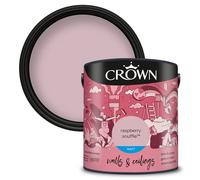

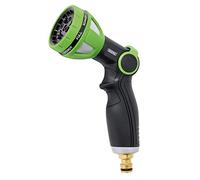

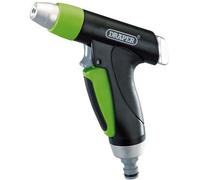









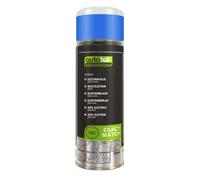

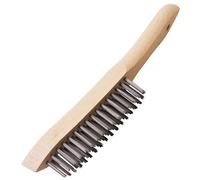



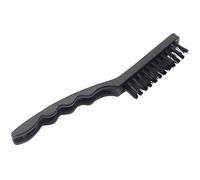


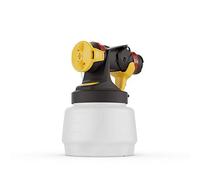
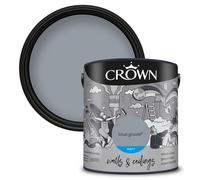


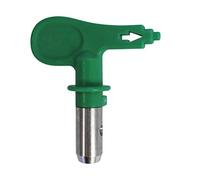



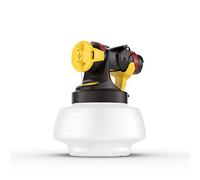





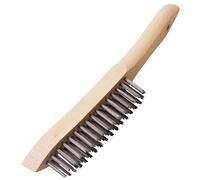

- 1
- 2
- 3
- 4
- 5
- next page
Exciting Offers for Painting & Decorating Enthusiasts
The decisive factor is the condition of the walls. If they are plastered cleanly, you can paint them without any problems. If they have small cracks, unevenness or several drill holes in them, it is best to cover the blemishes with wallpaper.
If the walls are poorly insulated, as is sometimes the case in old buildings, you should paint them, as wallpaper can promote the formation of mould. In brightly sounding new buildings, on the other hand, suitable wallpapers have a sound-absorbing effect. Advantageous is also their heat-insulating property.
A further factor is the design scope. While with wallpaper you only have the choice between different prefabricated colours, motifs and patterns, you can be completely creative when painting. You can mix your own individual colour, create a variety of patterns using different techniques or, with a little talent, create your very own work of art on the wall.
Of course, the cost and time involved are also important factors in the decision. A bucket of paint, a paint roller or spray gun and the right brushes tend to be cheaper than several sheets of wallpaper, paste and accessories. If you're an experienced DIYer, wallpapering is usually quicker. However, if you regularly change the look of your four walls, repainting is much less effort than a literal change of wallpaper.
Proper and thorough painting requires more than just brushes and paint. Here's a list of the tools you should have on hand for your painting project:
- Masking film or masking paper
- Masking fleece
- Masking tape
- Flat brush and paint roller
- Paint tray and scraper grid
In addition, you should have tools at hand, such as a cutter knife for cutting the tarpaulin to size. Ladders and telescopic poles are also part of the basic equipment, especially when painting high walls and ceilings.
The pivotal point for wallpapering is the wallpapering table. Its long plate offers enough space to roll out the wallpaper and cut it into individual strips. In addition to a knife, you will need the following utensils to cut the wallpaper to size:
- Folding rule or tape measure
- Pencil
- Spirit level
In order to apply wallpaper paste to the strips and finally put them on the wall, you will need these other products from the painter's supplies section:
- Paste and buckets
- Paste roller and brush
- Wallpaper brush or rollers
To prevent dripping glue from messing up your floor, you should also cover it with masking material when wallpapering, especially around the wallpapering table.
The correct preparation of the surface is important so that you can enjoy an even and uniform result at the end of your painting work. In a first step, clean the wall to be painted. Use a cloth that is a different colour to the wall. This way you can see if the old paint is peeling off. If it is, remove the old paint thoroughly and apply a primer before repainting.
Remove nails and screws including dowels with a suitable tool. Fill the drill holes and small cracks in the wall with filler and level out any unevenness with a spatula.
You should also protect your floor, furniture, window and door frames and sockets from unintentional paint stains and coats of paint. You can find masking film and adhesive tape in various sizes and designs that are ideal for this task.
When cleaning your painting tools, start by spreading the brushes and rollers on an absorbent surface - newspaper, kitchen paper or fabric remnants are good candidates - to remove excess paint. How you proceed with cleaning depends on the type of paint or varnish used.
If you used a water-based paint, you only need clear water to clean your brushes and rollers. Rinse the respective painting tool under running water until no more paint runs out. If no traces of paint remain when you squeeze it out on a paper towel, everything is spotlessly clean. If the cloth discolours, you have to rinse again. Proceed in the same way with paint rollers.
If the paint on the tool contains solvents, you will need a brush cleaner, thinner or turpentine substitute. Pour the liquid into a bowl and move the brush or paint roller back and forth until no more paint comes off. It usually takes several passes to clean thoroughly. Rinse with clear water afterwards.
Wallpaper paste is generally water-soluble, so you can clean paste rollers, brushes, the mixing tool and the bucket simply with warm water.
You have to dispose of different accessories from the area of painting supplies in different ways. Here is a list of what belongs where:
Hazardous waste collection point: liquid paint, paint thinner.
Residual waste: hardened paint, wallpaper paste, brushes, rollers, paint tubs, foil
Recycling bin / yellow sack: empty paint containers
If you have leftover paint after painting that you have no further use for and want to save yourself a trip to the hazardous waste collection point, simply allow it to air dry and, when it has hardened, throw it in the residual waste. Disposing of it down the sink or toilet is not an option under any circumstances.
In the case of paint thinners, turpentine and special cleaners, there is no way around the hazardous waste collection point. The same applies to cloths that have come into contact with them during cleaning.
Exciting Offers for Painting & Decorating Enthusiasts
At pricehunter.co.uk, you'll discover a treasure trove of offers for all your Painting & Decorating needs. Whether you're looking to revamp your living space or simply add a fresh coat of paint, our platform connects you to a variety of products, ensuring you find the best deals that suit your budget.
Choosing the Right Paint Type
Selecting the right type of paint is crucial for achieving the desired finish. Different paints serve various purposes, and understanding these can help you make informed decisions when you shop.
- Interior vs. Exterior: Choose interior paint for walls and ceilings, while exterior paint is designed to withstand the elements.
- Finish Levels: Options include matte, eggshell, satin, semi-gloss, and gloss. Each offers a unique aesthetic and durability.
- Eco-Friendly Options: Water-based paints are often more environmentally friendly and less odorous than solvent-based alternatives.
- Specialized Paints: Look for paints that prevent mold, resist stains, or are heat-reflective for specific needs.
- Colour Selection: Explore a wide spectrum of shades and hues to ensure you find the perfect match for your home decor.
Essential Tools for the Job
Having the right tools can significantly ease the painting process and enhance the final outcome. Here’s a handy list of must-have tools you might consider buying:
- Paintbrushes: Invest in high-quality brushes for smooth finishes; consider angled brushes for precision.
- Rollers: Perfect for large surfaces, rollers cover more area quickly and evenly.
- Drop Cloths: Protect your floors and furniture from paint splatters with durable drop cloths.
- Painter’s Tape: Achieve clean lines and prevent paint bleed with this essential sealing tape.
- Paint Trays: Use trays to hold your paint easily while you work; look for easy-to-clean versions.
Preparation is Key
A well-prepared space will contribute to a more professional-looking result. Here are steps you shouldn't overlook:
- Clear the Area: Remove furniture and cover remaining items to protect them from dust and paint.
- Surface Cleaning: Clean walls to remove dirt and grease, ensuring paint adheres properly.
- Repair Imperfections: Fill holes and cracks with appropriate fillers before painting.
- Priming: Use primer on bare surfaces or when switching paint types for optimal results.
- Ventilation: Ensure proper airflow in the working area to minimize fumes and speed up drying time.
Choosing Decorative Techniques
Enhancing your space doesn’t stop at just choosing a paint color. Decorative techniques can add character and style. Consider these options:
- Accent Walls: Create a focal point in a room using a bold color on one wall.
- Stenciling: Add patterns or designs using stencils for a personalized touch.
- Sponging: Use a sponge technique for a textured and stylish effect.
- Stripes or Geometric Shapes: Achieve a modern look with painter's tape to create clean lines.
- Ombre Effects: Blend colors seamlessly for a stunning gradient effect.
Budgeting for Your Project
Setting a budget for your painting and decorating project can help you manage your expenses while still achieving your dream look. Keep these tips in mind:
- Calculate Area Size: Measure the walls and ceilings to determine how much paint you'll need.
- Compare Prices: Utilize pricehunter.co.uk to find competitive prices on paint and supplies.
- Bulk Buying: Consider buying paint in larger quantities to save on costs.
- Factor in Tools: Don’t forget to include the budget for essential tools and accessories.
- Look for Deals: Keep an eye out for seasonal sales and discounts on painting supplies.
Note: This text was created with the help of AI.